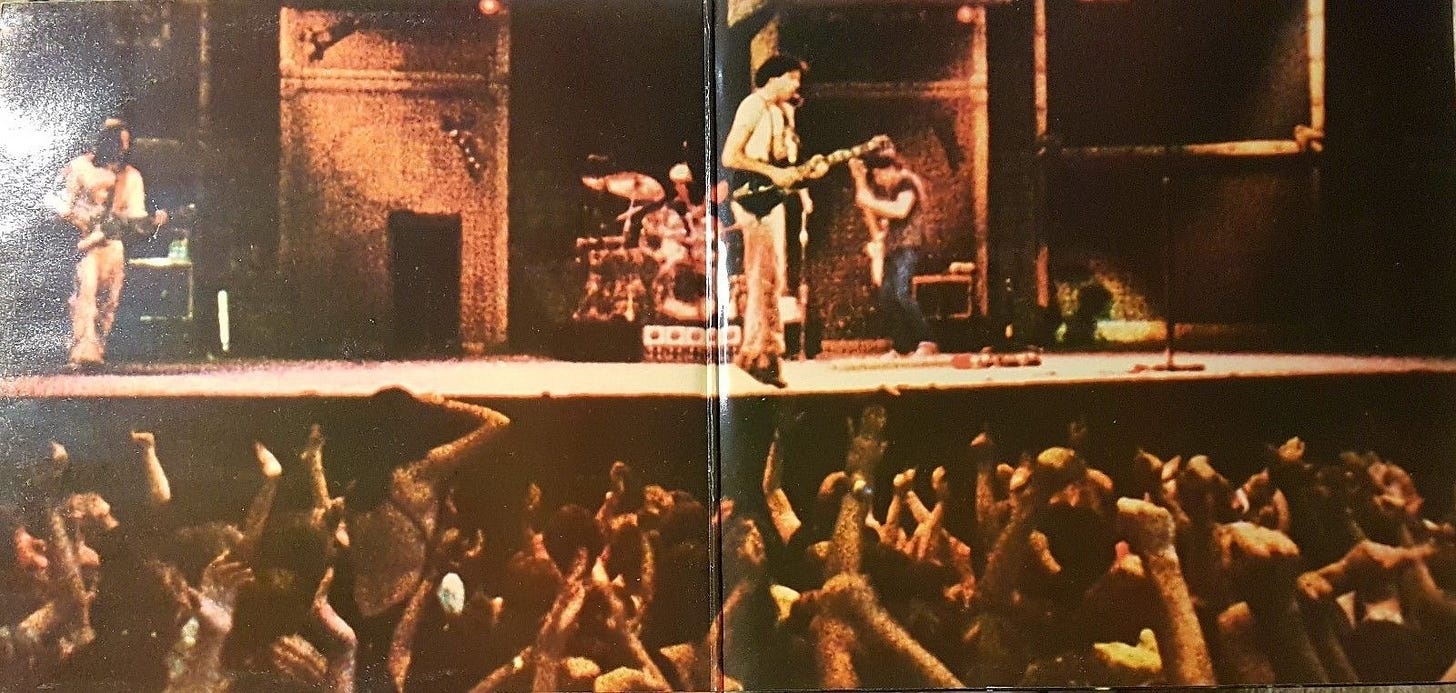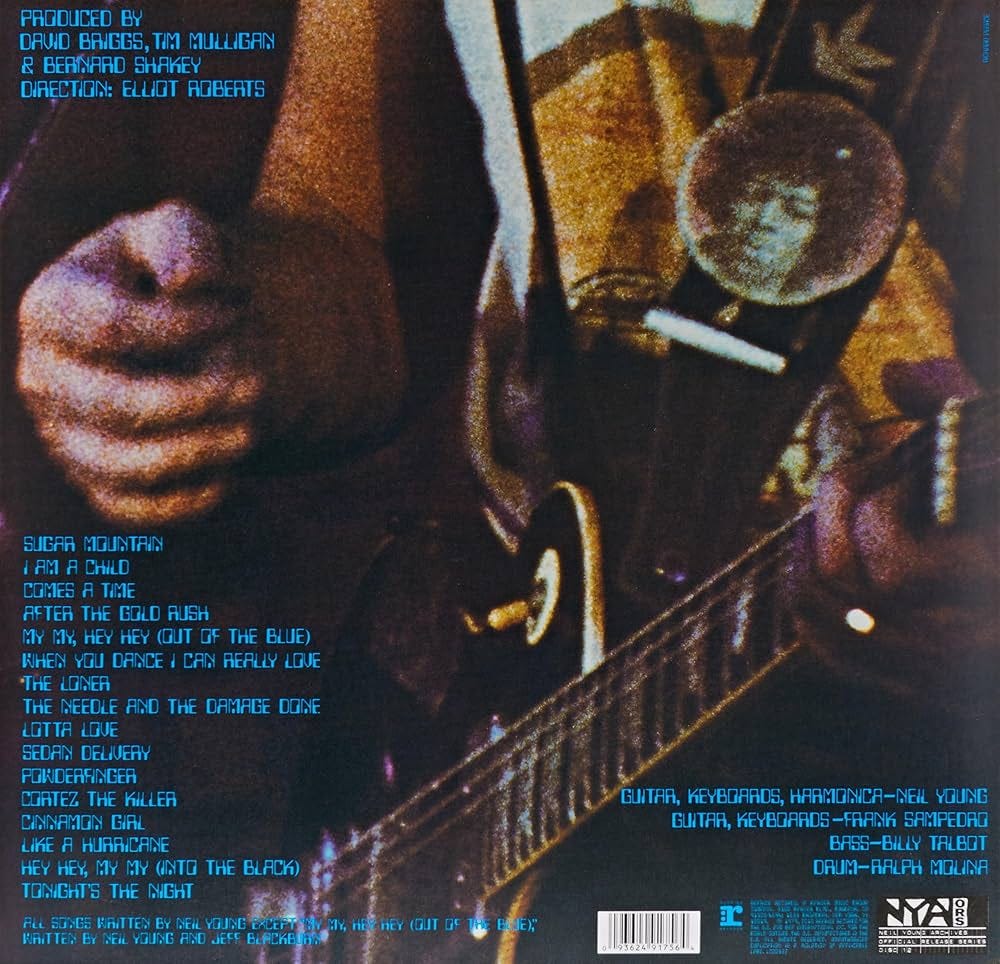Rust Never Sleeps
And neither does Neil Young's music
It was a prolific and proud time for music
More than a few music commentators have concluded that 1978, 1979 or thereabout was, by various measures the greatest moment in modern music. One of the primary benchmarks for considering 78/79 as the greatest year in modern music is the sheer diversity and innovation seen across genres and sounds.
In the late 1970s, Neil Young embarked on a journey that would produce one of the most iconic live albums in rock history: "Live Rust." The album, recorded during Young's "Rust Never Sleeps" tour, captures the raw energy and eclectic artistry that defined Young's music. Released in 1979, "Live Rust" is a sprawling, 16-track live album that spans Young's career up to that point, blending his folk and rock sensibilities into a cohesive, electrifying experience.
The "Rust Never Sleeps" tour was a significant period in Young's career. It showcased his dual nature as an artist: the acoustic troubadour and the electric rock pioneer. The tour's concerts were divided into two parts: an acoustic set, highlighting Young's introspective and poetic side, and an electric set, featuring the bombastic, feedback-laden sound of Crazy Horse, his long-time backing band. This juxtaposition of styles not only demonstrated Young's versatility but also mirrored the thematic contrasts in his music—hope and despair, love and loss, tranquility and chaos.
Reviews and Reception
Upon its release, "Live Rust" received widespread acclaim from critics and fans alike. Rolling Stone praised the album for its "emotional intensity and musical virtuosity," making it their Critic’s Album of the Year, while AllMusic highlighted it as a "definitive document of Young's live prowess." Critics noted how the album seamlessly integrated Young's acoustic and electric performances, creating a dynamic and compelling listening experience.
The live renditions of songs like "Sugar Mountain," "Cinnamon Girl," and "Like a Hurricane" became definitive versions, capturing the spontaneity and power of Young's live shows. The album's production, handled by Young himself, preserved the rawness and authenticity of the performances, making listeners feel as if they were part of the audience.
"Live Rust" also marked a turning point in Young's career. It solidified his reputation as a fearless, genre-defying artist and influenced a generation of musicians. The album's blend of folk introspection and rock ferocity would later resonate with the grunge movement of the early 1990s, with artists like Kurt Cobain citing Young as a significant influence.
Personal Impact and Generational Influence
Over 45 years later, Neil Young's "Live Rust" and the "Rust Never Sleeps" tour remain central musical tentpoles in my life. The admonishment and warning of the title concept—"rust never sleeps"—has not overtaken this music. If anything, it's the music that has never slept, informing the grunge era and numerous folk revivals since.
Many musicians have evolved to embrace more sophisticated tastes, and I, too, have learned a lot about music through my travels with the Johnny Favourite Swing Orchestra, a prolific neo-swing Big Band. But I guess I don’t go in that much for the finer things. The simple, unpretentious power of "Live Rust" has satisfied me musically for all these years.
At a pivotal crossroads in my life, between adolescence and adulthood, between disco, new wave, punk, and rock & roll, and between addiction and ambition, this music provided a guiding light. It was a time of balancing between good and evil, and Young's music echoed the light and dark of life through its acoustic and electric dichotomy. This taught me more about my life, loves, history, and future, and more about music at its heart than any other creative effort I’ve seen.
For many in my generation, particularly those caught between the rebellion of punk and the introspection of folk, "Live Rust" offered a musical haven. It spoke to our dual nature, our conflicts, and our desires. The album's enduring appeal lies in its honesty and its ability to capture the human experience's complexity in a way that remains relevant even today.
Neil Young's "Live Rust" era is not just a historical artifact; it's a living, breathing influence that continues to shape lives and musical landscapes. Its impact on a peculiar part of my generation - those caught between urban and rural, between tradesman values and university educations - is profound, offering lessons in simplicity, authenticity, and the enduring power of rock and roll.
Though I am just getting started with this new blog - now divided I guess into THE BEE and these more these more personal and musical notes - I’m just about at 100 subscribers and surprisingly at a pretty good starting income of supporters.
If you are able to share any of these posts, I’ll let you know when I cross that first 100 level.




